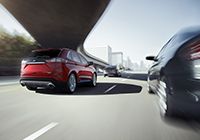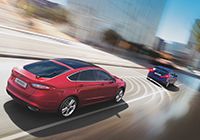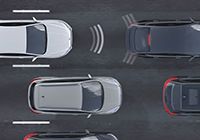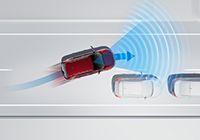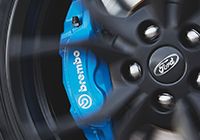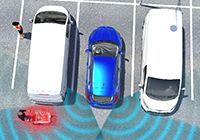Customers and Products > Improving Vehicle Safety >
Driver Assist Technologies
Sixty years after we set the standard with factory-installed safety belts, we still push the boundaries of safety innovation. We continue to develop new, innovative technologies to enhance vehicle safety and help customers stay safe on the road.
A World of Driver-Assist Options
We have made a wide variety of driver assist technologies available to customers, to help them drive more safely, to alert them to a potential collision and to make routine tasks easier. Many of these driver-assist features and semi-autonomous technologies use radar, sonar and cameras to sense and interpret the environment. We are now in the process of democratizing these technologies by offering them to our customers as standard equipment.
Ford Co-Pilot360 is the most advanced suite of standard driver assist technologies. It includes automatic emergency braking with pedestrian detection, blind spot monitor, a lane-keeping system, rear backup camera and auto high-beam lighting. No non-luxury competitor offers this as standard in North America.
Standard automatic emergency braking – called pre-collision assist with pedestrian detection – can help drivers avoid collisions with other vehicles or pedestrians who might accidentally cross in front of the vehicle’s path. If a potential collision is detected, a warning flashes and an alert sounds, and if the driver’s response is not sufficient, the system can automatically apply the brakes to help minimize a frontal collision. The technology addresses Ford research showing a growing trend of people worrying about hitting pedestrians, and will be standard on 91 percent of Ford vehicles in North America by 2020.
The blind spot information system, or BLIS, uses radar to identify a vehicle entering the blind spot and alerts the driver with an indicator light in the side-view mirror. Cross-traffic alert can warn drivers of traffic behind when slowly backing out of a parking spot or driveway.
The lane-keeping system has three functions. First, it can notify drivers through steering wheel vibration that they need to correct course when the system detects the vehicle drifting close to lane markings. Second, it provides steering torque to steer back toward the center of the lane. Third, a driver alert system continuously monitors driving patterns using a forward-looking camera and provides visual and audio warnings when the system estimates the driver’s vigilance level to be less than that of an attentive driver.

